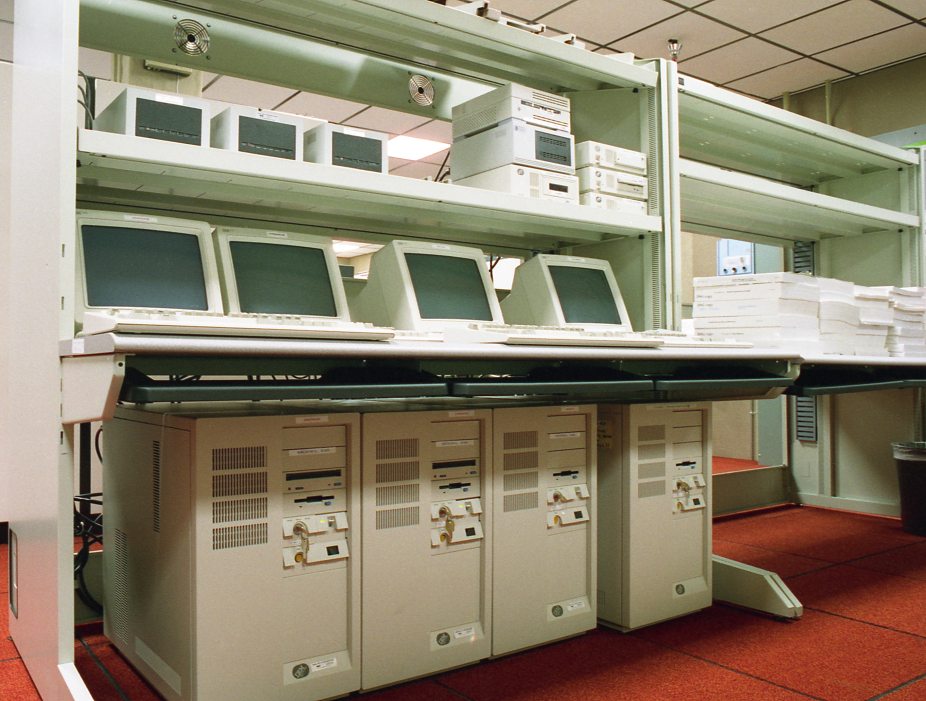IBM RS/6000 Cluster

IBM
In use: February 1, 1992 - September 1, 1997
Experimental and production use
Peak teraflops: 0.00
Processors: 4.00
Clock speed: 0.07GHz
Memory (terabytes): 0.00TB
NCAR’s Scientific Computing Division made the IBM RS/6000 cluster available to users on June 1, 1992, as a low-cost alternative to supercomputing on the Cray Y-MP8/864 (Shavano). The cluster was used for early experiments in parallel code development and in the evaluation of scalar compute servers in comparison with the Cray vector processors.
The cluster originally consisted of two model 590 RS/6000 nodes (Arapahoe and Comanche) and a model 550 RS/6000 550 gateway server (Chief). The nodes were networked together and ran IBM's UNIX-based AIX operating system. Chief provided the user gateway functions, the login point, the batch submittal facility, and spooling of data to and from the Mass Storage System.
The nodes had large memories (512 megabytes for Arapahoe, 384 for Chief), 6 gigabytes of disk space, and a fast clock (66 MHz). The gateway server had 128 megabytes of memory, 6 gigabytes of disk, and a clock speed of 42.5 MHz.
Another IBM RS/6000 550 node (Navajo) was added later for exclusive use by NCAR's Climate and Global Dynamics division.
The cluster was suited for single-tasked jobs since the nodes ran independently, without Parallel Virtual Machine or other software provision for job parallelization. It was also suited for jobs running NCAR Graphics or requiring intense scalar computation, or for interactive work or Fortran 90 job development. However, jobs had to have modest input/output requirements limited to tens, rather than hundreds, of megabytes per hour.
The cluster was not binary compatible with the Cray systems, although local software was available to help with tasks such as reading Cray binary data sets with numeric conversion, timing routines, and data compression routines.
This IBM cluster was decommissioned the first week in October 1997.